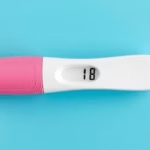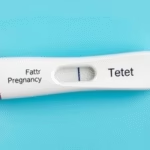Understanding Implantation Bleeding and HCG Levels
Implantation bleeding is a term used to describe light bleeding or spotting that occurs in some women during early pregnancy. This phenomenon is often linked to the implantation of a fertilized egg into the lining of the uterus. Understanding implantation bleeding and how it relates to HCG levels is crucial for anyone trying to conceive or monitoring pregnancy progress. Human chorionic gonadotropin (HCG) is a hormone produced shortly after a fertilized egg attaches to the uterus. The levels of HCG can give insights into pregnancy, including its viability and progress. In this article, we will explore the connection between implantation bleeding and HCG levels, clarifying why these factors matter in early pregnancy.
Implantation bleeding typically occurs around 6 to 12 days after conception and may last for a few hours to a few days. The exact timing can vary among women, depending on their individual menstrual cycles. HCG levels begin to rise shortly after implantation takes place, which can help confirm the pregnancy. Understanding both concepts can help women to better recognize the signs of pregnancy and when they should consider taking a home pregnancy test.
What Causes Implantation Bleeding?
Implantation bleeding occurs when a fertilized egg embeds itself into the uterine lining. The process can cause small blood vessels to break, leading to slight bleeding. This bleeding is typically light and can vary in color from pink to brown. Many women may mistake this for an early period, but it is usually much lighter than normal menstrual bleeding. Understanding the cause of implantation bleeding can help in early pregnancy recognition.
Many factors contribute to the occurrence of implantation bleeding:
- Timing of implantation
- Hormonal changes in the body
- Individual differences in uterine lining
Women trying to conceive should be aware that not everyone experiences implantation bleeding. For those who do, the modest spotting can be a sign of positive pregnancy progression.
The Role of HCG in Early Pregnancy
Human chorionic gonadotropin, or HCG, plays a key role in early pregnancy as it signals the body to maintain the uterine lining and prevents menstruation. After implantation, HCG levels begin to rise and are usually detectable in the blood about four to five days after implantation bleeding occurs. This rise in HCG is vital for the stability of the pregnancy. Monitoring HCG levels can shed light on the overall health of the pregnancy.
Normal HCG levels vary widely in early pregnancy:
- 3 weeks after the last menstrual period: 5 to 50 mIU/mL
- 4 weeks: 10 to 425 mIU/mL
- 5 weeks: 217 to 8,245 mIU/mL
- 6 weeks: 1,080 to 56,500 mIU/mL
These levels typically double every 48 to 72 hours in the early stages, reflecting a progressing pregnancy. If HCG levels plateau or drop, it could signal complications like an ectopic pregnancy or miscarriage.
How to Determine if Implantation Bleeding Occurred?
Identifying whether implantation bleeding has occurred can be complicated due to the similarities it has with menstrual bleeding. Spotting just before an expected period can confuse many women. To determine if it’s implantation bleeding, consider the following:
- Timing: Occurs about a week before an expected period.
- Flow: Much lighter than a normal period, generally just spotting.
- Color: Can be light pink or brown, unlike the red usually seen in menstrual flow.
- Other Symptoms: Accompanied by mild cramping or other early pregnancy symptoms.
In some cases, women may need to wait and take a pregnancy test to confirm if they are pregnant. Understanding these distinctions can help in recognizing early signs of pregnancy.
Common Symptoms Associated with Implantation Bleeding
Symptoms related to implantation bleeding can vary among women. Those who experience it may note the following:
- Light Spotting: The most apparent symptom, usually evident at the moment of implantation.
- Mild Cramping: Some women feel light cramping in their lower abdomen due to uterine contractions.
- Changes in Discharge: Women may notice changes in vaginal discharge, becoming thicker or more creamy.
- Breast Tenderness: Hormonal fluctuations may cause sensitivity or fullness in the breasts.
- Fatigue: Expected due to hormonal shifts during early pregnancy.
Awareness of these symptoms might provide insights into whether you are experiencing early pregnancy signs or simply premenstrual symptoms.
When to Take a Pregnancy Test After Implantation Bleeding
Timing your pregnancy test is essential for accurate results. After experiencing implantation bleeding, it is best to wait a few days before taking a home pregnancy test. Since HCG levels need time to rise to detectable levels, following these guidelines can help:
- Wait 1-2 days: After implantation bleeding, HCG may not be sufficiently high for detection.
- Time of Test: Morning tests may yield higher concentration results.
- Follow Up Testing: For more accurate readings, consider testing every couple of days.
Using these strategies will assist in obtaining a more accurate result and confirming pregnancy.
Potential Issues Related to HCG Levels and Implantation Bleeding
Understanding potential issues regarding HCG levels after experiencing implantation bleeding is vital. Low HCG levels can suggest complications in pregnancy, such as:
- Ectopic Pregnancy: A pregnancy that occurs outside the uterus and can lead to serious health issues.
- Miscarriage: A pregnancy loss occurring in the early stages.
- Incomplete Miscarriage: Retained products of conception may prevent HCG from falling appropriately.
Monitoring HCG levels post-implantation bleeding can provide necessary information for checking the viability of the pregnancy. Regular follow-up with a healthcare provider is essential for anyone concerned.
Final Thoughts
In summary, understanding implantation bleeding in relation to HCG levels is critical for women navigating early pregnancy. Implantation bleeding is a possible sign of pregnancy and may occur shortly after a fertilized egg implants in the uterus. Tracking HCG levels after this event can provide additional insight into a healthy pregnancy.
While not all women experience implantation bleeding, recognizing its signs can be valuable in determining if one is pregnant. Timely hormone tests can offer clarity on HCG levels, helping to confirm the pregnancy status. Regular monitoring and consultations with healthcare providers are essential for anyone experiencing unusual symptoms.
For those eager to conceive or those who may encounter potential complications, understanding both implantation bleeding and HCG levels can empower women in their pregnancy journey.
Frequently Asked Questions
- Is implantation bleeding the same as a period?
No, implantation bleeding is usually lighter and shorter than a normal period. - How long after implantation bleeding can I test for pregnancy?
Wait at least 2 days for accurate results. - What should I do if I have heavy bleeding?
Contact a healthcare professional immediately, as heavy bleeding could indicate complications. - Can implantation bleeding occur with cramping?
Yes, some women may experience mild cramps along with implantation bleeding. - What if my HCG levels are low?
Consult your doctor for further evaluation to determine the cause.
Further Reading
What Type of Psychotherapy Is Best for Anxiety?







